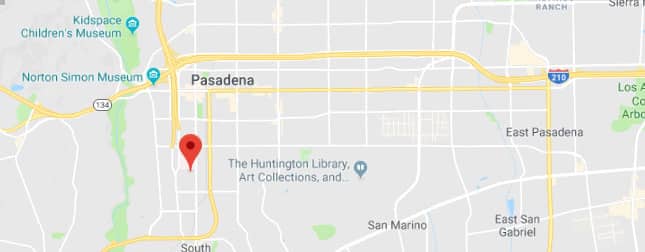 When it comes to facial rejuvenation, there are a variety of options available to help you achieve a more youthful appearance. Two popular choices are facelifts and fillers. Both procedures can help address signs of aging, but they work in different ways and offer unique benefits. In this guide, we will explore the differences between facelifts and fillers, helping you to make an informed decision about which option may be best for you. Dr. Eric Yavrouian provides facelift and fillers to patients in Glendale, Pasadena, Burbank, Greater Los Angeles, Beverly Hills, CA, and surrounding communities.
When it comes to facial rejuvenation, there are a variety of options available to help you achieve a more youthful appearance. Two popular choices are facelifts and fillers. Both procedures can help address signs of aging, but they work in different ways and offer unique benefits. In this guide, we will explore the differences between facelifts and fillers, helping you to make an informed decision about which option may be best for you. Dr. Eric Yavrouian provides facelift and fillers to patients in Glendale, Pasadena, Burbank, Greater Los Angeles, Beverly Hills, CA, and surrounding communities.
Understanding Facelifts – A Comprehensive Approach to Rejuvenation
A facelift, medically termed rhytidectomy, stands out as a surgical intervention aimed at elevating and refining the facial and neck skin for a rejuvenated look. This procedure meticulously removes surplus skin and restructures the underlying tissues to counteract the effects of aging. By addressing sagging skin and pronounced wrinkles, a facelift transcends the capabilities of non-surgical alternatives, offering a comprehensive solution for those seeking substantial improvements. It effectively targets the deeper layers of the face, which contributes to a more profound and enduring transformation. The process may also entail the tightening of facial muscles, further enhancing the youthful contour and resilience of the skin. Ideal for tackling significant signs of aging that are beyond the reach of less invasive methods, facelifts embody a pivotal option within the spectrum of facial rejuvenation treatments. This surgical route demands a period of recovery, reflecting its extensive approach to restoring a more youthful visage. It stands as a testament to the advancements in aesthetic surgery, providing a path to substantial, long-lasting facial enhancement for individuals confronting considerable aging concerns.
Exploring Fillers – Minimally Invasive Yet Effective
Fillers have emerged as a cornerstone in the realm of minimally invasive facial rejuvenation strategies. These injectable solutions, comprised of substances like hyaluronic acid, calcium hydroxylapatite, and poly-L-lactic acid, are adept at restoring lost volume, diminishing the appearance of wrinkles, and sculpting facial contours with precision. Unlike surgical interventions, fillers require no extensive preparation or recovery time, making them an attractive option for individuals seeking quick enhancements. They are adept at filling in lines and creases, such as those that run from the nose to the corners of the mouth (nasolabial folds) and the lines framing the chin (marionette lines), and are also effective in augmenting areas like the cheeks and lips that may have lost volume due to aging or weight loss.
The administration of fillers is a delicate art, tailored to meet the unique aesthetic goals of each patient, and is performed through a series of strategically placed injections. The immediate visual improvement, coupled with the minimal downtime, positions fillers as a highly appealing choice for those looking to refresh their appearance with subtlety. Although the results of fillers are not permanent, many find the ability to adjust and maintain their youthful visage over time to be a beneficial aspect of this treatment modality. This allows for adjustments as natural aging progresses, ensuring a continuously harmonious and natural-looking outcome.
The Ideal Candidates for Facelifts vs. Fillers
Determining whether a facelift or fillers are right for you hinges on assessing the extent of aging and your aesthetic goals. Facelifts cater to individuals confronting pronounced signs of aging – those grappling with sagging facial skin, deep-set wrinkles, and noticeable loss of facial volume that cannot be adequately addressed through less invasive means. This surgical solution is often sought by those willing to undergo a more significant procedure for enduring and remarkable results, typically suiting those in the middle to later stages of life seeking a rejuvenated appearance.
Conversely, fillers serve as an ideal choice for individuals experiencing early to moderate signs of aging, such as fine lines, minor wrinkles, or slight volume loss in the face. They are particularly appealing to those aiming for immediate enhancements without the downtime associated with surgical interventions. This minimally invasive option is well-suited for individuals desiring subtle adjustments and are comfortable with the idea of periodic treatments to maintain their youthful appearance.
In essence, the journey towards facial rejuvenation begins with a realistic appraisal of aging signs and personal expectations. Understanding the distinctions between these treatments enables a more informed decision, aligning one’s aesthetic aspirations with the most suitable rejuvenation pathway.
Pros and Cons of Facelifts
Facelifts are renowned for their capacity to significantly revitalize the face and neck, offering a transformation that is both profound and lasting. The effects can be dramatically visible, counteracting deep wrinkles, sagging skin, and other pronounced signs of aging, which lesser interventions cannot adequately address. This procedure not only enhances the aesthetic appeal but also instills a sense of confidence, aligning one’s external appearance more closely with their internal vitality.
On the flip side, undergoing a facelift involves a commitment to a surgical process, which includes a period of recovery. Patients must allocate time for healing, during which they may experience discomfort and a temporary halt in their daily routines. The risk of potential complications, such as infection or scarring, although relatively low, exists and should be considered. Additionally, the financial investment in a facelift is notably higher compared to non-surgical alternatives, making it a considerable factor in the decision-making process.
The decision to opt for a facelift over other treatments entails weighing these lasting benefits against the immediate logistical and financial considerations. For individuals seeking a transformative solution to significant aging signs, the advantages of a facelift often outweigh the drawbacks, making it a worthwhile pursuit for long-term rejuvenation.
Pros and Cons of Fillers
Fillers, as a cornerstone of minimally invasive facial rejuvenation, present a range of advantages, particularly their ability to provide instant enhancements with minimal interruption to daily life. These injectable treatments are highly versatile, allowing for targeted improvements in facial volume, the smoothing of lines and wrinkles, and the sculpting of facial contours. The diversity of fillers available, including those based on hyaluronic acid and other substances, enables personalized treatment plans that can be adjusted over time to meet evolving aesthetic needs.
One of the most appealing aspects of fillers is the negligible recovery time required, making it possible for patients to return to their routine activities almost immediately. This contrasts sharply with the downtime associated with more invasive procedures. Moreover, the effects of fillers, while temporary, can last from several months to over a year, providing a flexibility that appeals to those seeking to refine their appearance without committing to the permanence of surgical solutions.
However, the temporary nature of fillers also constitutes a drawback, as periodic treatments are necessary to maintain the desired effects, entailing ongoing investment both in terms of time and financial resources. While fillers can achieve remarkable results in the treatment of fine lines, volume loss, and mild sagging, they are limited in their ability to address more substantial signs of aging, such as significant skin laxity or deep facial folds. For such concerns, fillers may serve as a complement to surgical interventions rather than a standalone solution, highlighting the importance of a comprehensive approach to facial rejuvenation tailored to individual aging patterns and aesthetic objectives.
Combining Facelift and Fillers for Enhanced Results
For individuals aiming to achieve a fully revitalized appearance, integrating both facelift and filler procedures presents a synergistic approach. This combination leverages the strengths of each treatment, where a facelift provides a foundation by addressing more pronounced aging concerns like sagging skin and deep-set wrinkles. Concurrently, fillers can be used to finesize the rejuvenation process, injecting subtle volume into areas that require a softer touch, such as the lips, cheeks, and under-eye hollows. This holistic strategy ensures a balanced and refined outcome, enhancing the natural contours of the face while maintaining or restoring volume where it tends to diminish with age. By marrying the lifting effects of a facelift with the volumizing capabilities of fillers, patients can enjoy a comprehensive transformation that neither procedure could fully achieve on its own. This tailored approach allows for a customized rejuvenation plan that addresses the specific needs and aesthetic desires of each individual, offering a path to achieve a more youthful and harmonious facial appearance.
Making the Right Choice for Your Facial Rejuvenation
Embarking on a journey towards facial rejuvenation requires thoughtful deliberation and guidance. The selection between facelift and fillers hinges not merely on personal aesthetic ambitions but also on the unique characteristics of your skin and the degree of aging it has undergone. An essential step in this process is engaging with a board-certified plastic surgeon, whose expertise lies in evaluating your facial structure, discussing your rejuvenation goals, and advising on the most effective pathway to achieve them. A comprehensive assessment will illuminate the optimal strategy, whether it leans towards the surgical precision of a facelift, the subtle enhancements afforded by fillers, or a combined approach for a more complete rejuvenation. Such a personalized treatment plan promises not only to align with your aesthetic objectives but also to respect the natural aging process, ensuring results that are both satisfying and harmonious. Through this collaborative process, you are empowered to make a choice that best suits your vision of facial rejuvenation, with a clear understanding of the journey ahead.
For more information about treatments and procedures by Facial Plastic and Reconstructive Surgeon, Dr. Eric J. Yavrouian, serving patients in and around Glendale, Pasadena, Burbank and the Greater Los Angeles, CA area call 818-241-2150 or click here to contact him for a consultation.






